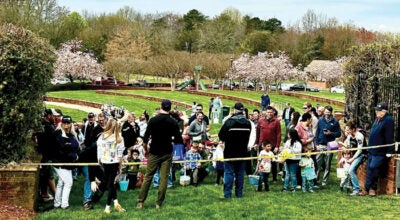Q&A: The change in weather brings out questions
Published 12:00 am Saturday, November 18, 2023

- Chickweed
We’ve had a few days of winter weather, but lately it seems more like early May than November. Many are working outdoors with ongoing gardening and landscaping chores. Here are some questions posed that may be of relevance to your gardening situation.
Question: With the warm weather, I already have winter weeds such as henbit and chickweed emerging in my newly seeded lawn. Can I apply a herbicide to kill winter weeds now and not hurt my newly established lawn?
Answer: Yes, but be sure your lawn is well established. If it has been mowed at least three times, it can withstand a postemergence herbicide application. Hose on applications broadleaf weed killers work well on early emerging, tender winter weeds.
Question: We have a large oak tree with big roots spread out seemly on top of the ground. The exposed roots are ugly and it is difficult to mow with the exposed roots. Can I cut them off level to the ground?
Answer: It’s important to avoid any type of damage to your tree’s the root system. Open wounds, especially on or near the soil surface provide an easy access to fungi and bacterial diseases which could infect and eventually kill the tree. Adding a layer of mulch to the area to avoid mowing is most likely your best option.
Question: Can I still fertilize and seed my lawn now?
Answer: Yes, but germination will be slow with the cooler weather. Be sure to keep the seeded areas irrigated. It’s also important to keep leaves off of both newly seeded and established fescue lawns.
Question: Our lantana is completely dead after the big freeze a few weeks ago. I was considering pruning out the dead limbs, but I remember someone told me that you’re not supposed to prune them back until the spring after they begin to leaf out. Is this correct?
Answer: Yes, unfortunately it’s best to wait until spring before pruning. If you prune them back now water often collects in the hollowed cut stems causing the crown of the plant to decay over the duration of the winter. It’s best to wait until new growth occurs at the base of the plant in the spring and prune them back to the ground.
Darrell Blackwelder is the retired horticulture agent and director with the North Carolina Cooperative Extension Service in Rowan County. Contact him at deblackw@ncsu.edu.




